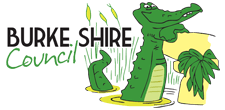Leichhardt - An Overview
The journeys of Friedrich Wilhelm Ludwig Leichhardt have captured the imagination of many, both in his own time and in the century and a half since he began his expeditions through Queensland.
Born in Trebatsch, Prussia, in 1813, the enthusiastic young Ludwig was student at the Universities of Berlin, Göttingen and institutions in London and Paris from 1832 until he left Europe in a desperate bid to find a fresh field for his research, put his skills to good use and make a name for himself.
Initially a linguist, he transferred his studies to the Faculty of Medicine, not to graduate a medical practitioner, but because the natural sciences, which had become his consuming passion, were taught only in that faculty. The dedication and propaganda of John Dunmore Lang about the great potential of New Holland, led Leichhardt to believe that it could not fail to become '... a true home of the arts and sciences.'
So the well qualified and ambitious young man departed for Sydney in October 1841. Disappointed in his various efforts to gain employment in NSW, he occupied himself with collecting and data gathering journeys.
From Port Stephens, he travelled via the Gwydir to the Darling Downs and Brisbane, notebooks packed with topographical, geological and botanical information, notes on fishes, Aboriginal customs, settler's customs, social attitudes of convicts and emancipists, wage rates, cartage cost, the design of yards and shearing sheds and the value of different breeds of working dogs. Everything was grist to collector Leichhardt's mill.
When the NSW Government decided that the establishment of an overland route between settled parts of NSW and Port Essington would advantage the colony by opening a direct line of communication with the islands of the eastern Archipelago, India and other parts of Asia, Leichhardt was anxious to take part.
The Governor, short of funds, had referred the matter to London as a stalling tactic and was reluctant to allow the expedition to proceed. But the public, smarting from recession, was anxious to support any possibility of relief, however remote. Public pressure and a newspaper campaign, mentioning Leichhardt by name as the ideal leader, won the day.
Contributions came in both in money and in kind. The Leichhardt Expedition to Port Essington was launched and Dr Leichhardt was to lead it.
Without Government funding the party was lightly manned, provisioned and equipped when it left Sydney for Brisbane in August 1844.
Six men, including the leader; a single wheeled vehicle, for use only to the Condamine; thirteen horses; fifteen hundred pounds of dried provisions; travelling stock and Leichhardt's experience in living off the land. Four other members joined the expedition in Brisbane, but two were obliged to return to Brisbane from the Dawson area.
From the Dawson River, close to where Taroom now stands, Leichhardt headed north to the Valley of Lagoons on the headwaters of the Burdekin, then along the Lynd River to the Mitchell.
On June 28, 1845 in a sudden night attack close to the Mitchell River, which Leichhardt had named for the Surveyor General of NSW, warriors of the tribe in whose territory they were, killed Gilbert and wounded two others. Gilbert was a naturalist, who had joined the party in Brisbane.
On July 5, the expedition caught the first sight of the Gulf and from that point took a month to reach the Albert somewhere about the junction with Beames Brook.
Of the area which Captain Stokes had called the Plains of Promise, Leichhardt wrote '...Should a harbour be found at the head of the Gulf of Carpentaria, which might allow ships to approach and moor in safety, it would not only open this fine country to colonisation, but would allow the produce of the high land of the York Peninsula to be brought down to the Gulf of Carpentaria as well as to the east coast. Cattle and horses could be easily driven from coast to coast, and they would even fatten, as water and feed are everywhere abundant .'
They had crossed the Gulf Savannah from east to west and arrived at Port Essington on December 17,1845, after a marathon journey of 3,000 miles and with one bullock of their mobile meat supply still walking.
For very sound reasons, Leichhardt chose to distinguish the names of his supporters and expeditioners by applying them to the noteworthy features he recorded. He took little heed of the niceties of colonial society in doing this.
Mr Walter Beames, the well known Sydney grocer who had assisted with provisioning, is remembered in the Brook; Mr Robey, who provided ironwork, in the range of that name. The two Aboriginal party members, Sir Thomas Mitchell, the Archer Bros, Captain Lynd, squatters, a ticket-of-leave man, emancipists - those who had helped, had their remembrance, and some of the more important disliked the company of ex-convicts even on a map.
This caused something of a furore at the time, much enjoyed by the newspapers, for a number of notables who thought places should have been named for them had their noses out of joint.
Leichhardt certainly made the name he wished for with this tremendous achievement, but he lost his life while pursuing his next objective, crossing the continent from Brisbane to Perth. The fate of this expedition remains a mystery, and is surrounded by rumour and speculation still.
More information on Ludwig Leichardt at leichhardt.sub.uni-goettingen.de, Goettingen
